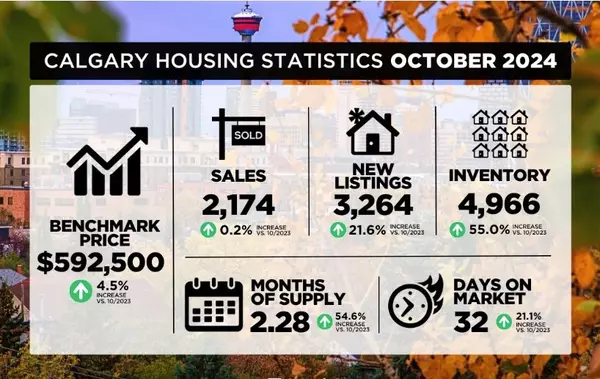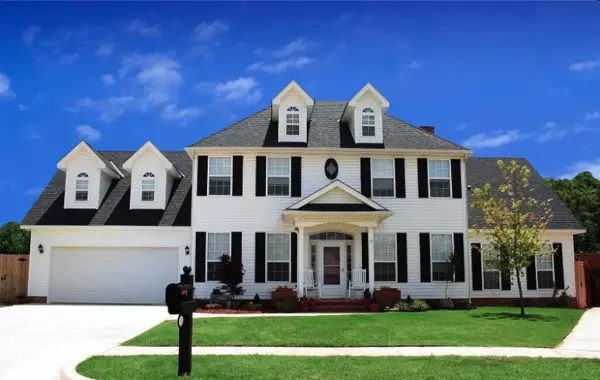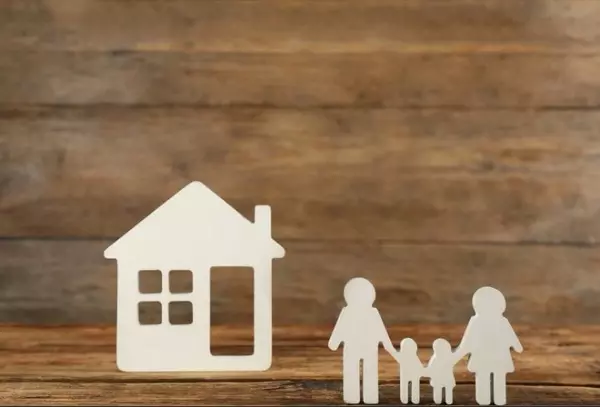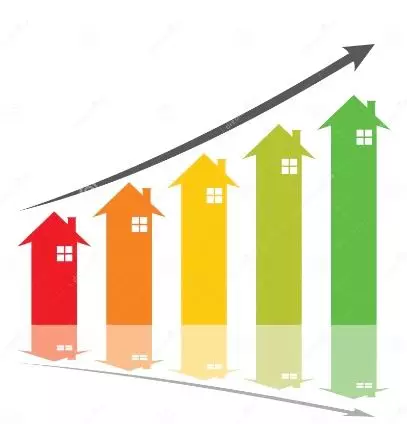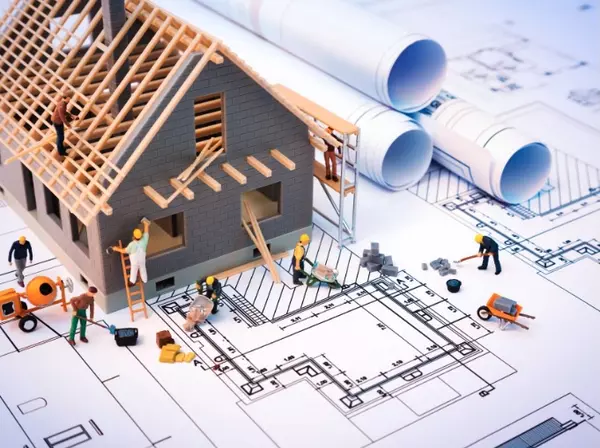Millennials’ Homeownership Dreams Can Come True

For many millennials, the dream of homeownership feels far away, if not impossible. Salaries that haven’t grown with the cost of living, new mortgage rules, volatile housing markets, and a plethora of other reasons have made buying a home more difficult than it’s ever been for young people. A survey by Apartment List of 24,000 American renters found that 80% of millennial renters want to become homeowners, but 72% are held back by affordability. Some 44% don’t have savings to put toward a down payment. Many who find themselves in that position are trying to reach their homeownership goals with second and even third jobs in order to save extra money. Some are moving to smaller towns where housing is cheaper, while others are living with Mom and Dad in order to save on rent. But Fundrise, a Washington, D.C.-based start-up, has another, more creative solution. Fundrise is a real estate crowdfunding start-up that sells shares in “eFunds” that build and/or remodel urban housing. An investor can be part of an eFund for $1,000, and the target audience is millennials. Notes a recent Forbes article on the project: “(T)he goal is for a subset of the fund investors to become owners of the very places their money is helping build. Fundrise calls these ‘homebuyer investors’ or HBIs.” So if a millennial could invest in a property today, he or she could be taking advantage of gains toward what might eventually become his or her home. As well, says Forbes writer Samantha Sharf: “Fundrise’s effort is unique in tackling the dearth of affordable supply, which many economist [sic] agree is the biggest issue in the housing market today.” The Fundrise project launched this past summer, so it’s too early to assess its success in encouraging new supply or in attracting millennials.But this initiative may soon become one of many – millennial’s deserve their shot at home ownership too.
Read MoreMake Your Home Buyer Friendly with Focused Staging

With the move to buyers’ markets in many areas, you’ll want your for-sale home to look its best. And that requires focus. Focused staging, that is. Staging your home can increase the offer amount by up to 10%, according to the National Association of Realtors (NAR) 2017 Profile of Home Staging. But what if you haven’t the time or cash to stage the whole house? You focus on the rooms that push buyers’ buttons. A messy mudroom may not kill your sale, but an unusable kitchen or master bedroom may be a deal-breaker. Few buyers can see beyond your personal style, particularly in hot-button areas like the living room, kitchen and master bedroom. So concentrate on staging these. This article – from RISMedia – may help: According to the NAR Profile, the living room is one of the most popular to stage. Make it feel larger by replacing bulky furniture with smaller pieces. Help buyers to imagine their things here; leave lots of space on shelves and around furniture. In the kitchen, declutter countertops, the fridge and inside cabinets (yes, buyers willlook). Add color with a bowl of fruit. “Most bedrooms don’t need much more than the bed, dresser, end tables, and a mirror,” the article suggests. Make the bed the focus with beautiful, but not necessarily expensive, linens. A clean bathroom is a saleable bathroom. The master bath, especially, should gleam. Add attractive towels and battery candles for atmosphere. And don’t forget to tidy the outside. You know what they say about first impressions.
Read MoreLearn the Language of Lighting to Enhance Your Living Space

A beautifully lit home is warm and welcoming. A distinctive glow can set the scene, enhance a room, highlight a detail, or make a workspace downright workable. But lighting has a language all its own. Do you know the lingo? Flush, recessed, pendant, starbursts, pots … the list goes on. Where should you begin? In a recent houselogic article, columnist Emily Dunham writes, “… lighting can be a bear to understand. The world has its own language (know what lumens and Kelvins are?), and increasing costs can make decisions intimidating.” Dunham notes that LED lights can cost as much as $35, and Apple sells a new number that goes for about $65. But with careful planning, you can light up your life and go easy on the budget. Here’s a quick lighting language lesson to get started. Kelvin is a scale of measurement for the “color” a light produces. Wattage tells you how much electricity a bulb consumes. Lumens are the amount of light or brightness you get from a bulb. The next important lesson is lighting layers. Since every room has different lighting requirements, it’s important to think in these three layers: ambient, task and accent. Ambient is the general lighting in a room, often coming from overhead. Task lighting illuminates an area where a particular task is completed. Accent lighting highlights something to which you want to draw attention. Think of the activities you do in each room and consider the options. For example, in the kitchen, you’ll want to avoid overhead lights that create shadows on the counters. Instead, choose side lights or under-the-cabinet lights to illuminate the tasks at hand. The size of your room also dictates the lighting you need. It’s wise to use at least two types of lighting to create the ideal effect. Now that you know the basics, go shed some light!
Read MoreHome Buying Tips for Retirement

Many people consider buying a home specifically for retirement. After all, your needs and desires for a house can be a lot different at 60 then they were at 30. The kids are gone, you may not want to walk up and down the stairs forever, and you may want to live somewhere you have always dreamed of. What better time to make a change than when you retire? While it can be exciting to consider such a significant change, it is essential to pay attention to what you are doing as you purchase your retirement home. You want to get this right. Fortunately, with the help of an experienced Real Estate agent and a little homework, you can move forward with confidence. One of the first things people often ask themselves is when should I downsize my home. The answer can vary from person to person. Take a look at the previous reference for some guidance in making sound decisions. Keep reading for some of my best tips for finding a retirement home that will work best for your circumstances. 1. PICK A LOCATION THAT WILL WORK WELL WHEN YOU ARE OLDER. As you age, it is going to be more challenging to get around. Eventually, driving will not be an option. So you want to pick a location that will give you easy access to the things you care about. Rural locations may be fine if you are close to friends and family, but city locations are often easier to get around in. Also, consider what activities you enjoy the most and try to make them easy to access. One of the things I’m often mentioning to people is thinking about how to pick a neighborhood you will love. Some of the things mentioned may or may not be necessary to you. What you have to figure out is what are must-haves. Do you want to be close to the beach, a golf course or some other hobby you enjoy? Make sure you consider the drive time when picking a place for your retirement home. 2. SINGLE-STORY HOMES ARE IDEAL. No matter how health conscious you are, there will come the point where going up and down a staircase is no fun. And in the unfortunate situation where someone is in a wheelchair, stairs become a much bigger problem. Even a single step can make getting around the home difficult depending on your circumstances. If you are thinking about new construction, you might even want to plan for some of the more popular handicap features such as wider doorways and walk-in showers. Keep in mind the type of space you are looking for. For example, will your children or grandchildren be regular visitors? If so you should consider having an area set aside for them. 3. DO YOUR RESEARCH ABOUT RETIREMENT COMMUNITIES. If you find the idea of living in a retirement community appealing, make sure to do your research before you buy. Although it can be nice to be in a community of people your age, with activities and things to do, the rules at such communities can be strict. You may be very limited on how you can decorate the outside of your house, how long your kids or grandkids can stay over, etc. Understanding how to pick an over 55 neighborhood to live in is a vital consideration. Many people have a hard time going from a home into a condominium. Think about it – you have been the king of your castle for many years, and now a group of people is saying you can’t plant flowers in your yard. The harsh reality of going from your roost to one that is controlled by others can be challenging at first. Keep this in mind when trying to decide between a home and condo. Pay particular attention to the daily lifestyle you would like to lead. 4. STEP-IN SHOWERS ARE MORE ACCESSIBLE AS YOU AGE. Older people can sometimes find it difficult to step into and out of a bathtub. Step-in showers, on the other hand, are easy to enter and exit. Some step-in showers have no step at all, which makes them easier to get wheelchairs into. These kind of showers are a super convenient feature you might want to think about whether you choose to live in a house or condominium. Better Homes and Gardens showcases some fantastic walk-in showers worth checking out. 5. GO FOR BIG HALLWAYS, ENTRYWAYS, BATHROOMS, ETC. More and more people are choosing to build new as part of their retirement home plan. Buying new constructions offers a myriad of benefits including customizing precisely what you want. Many retirees are opting to make their living quarters easier to get around in. Wide pathways are much easier to navigate with a wheelchair, including hallways, entryways, and bathrooms. Fortunately, the current style for homes focuses on spaciousness, so it should not be too complicated to find a home that has the room you may need. Buying new construction, however, does not come without its challenges. Working with a builder at times can be very stressful. Make sure you are up for the challenge. Here are some tips for buying a new home. Make sure you ask the builder these questions before purchasing new construction. 6. MAKE A PLAN WITH YOUR SIGNIFICANT OTHER. It may seem funny, but more couples than you think assume that they are on the same page about retirement – when they aren’t. If you believe that you are going to be retiring on the coast, while your partner is dreaming of going back home to the Midwest, you are going to have a problem. Instead of making assumptions, take some time and have multiple conversations about what you both want in a retirement home. With a little planning, you should be able to come to an agreement that makes both of you happy. More and more couples who have some financial independence are also purchasing a second home in a vacation destination. They are buying a home near family but also have a second place in a location they love. Typically, the vacation spot is in a warm weather climate that is easier on our bodies as we age. 7. CONSIDER YOUR REAL-WORLD SOCIAL NETWORK. If you have been living in an area for very long, you probably have a social network of friends, family, and coworkers. Sometimes retirees discover that moving across the country for retirement is not as much fun as they first imagined when they start missing their friends and family – and Facebook is no substitute for real-world interactions. You may be adventurous and ready for something new, which is never a bad thing. But you want to be prepared for the loss of your current social network if you choose to move a significant distance. 8. MAKE A FINANCIAL PLAN THAT INCLUDES YOU NOT WORKING. This may seem obvious, but it can be easy to get caught up in dreaming of your retirement life and forgetting the income limitations you are going to be working with once you are done working. You need to be able to afford your new home, including all the related expenses – repairs, renovations, taxes, etc. – while still being able to enjoy yourself and the things you love doing. You want a realistic financial plan before you buy. Speaking with a financial advisor is always a smart move before buying a home for retirement. Some people make the mistake of buying a retirement home based on their current income. Planning for the future and not the moment is essential. Be sure to ask yourself a fundamental question – what happens if my spouse dies? Having a solid financial plan in place for the unexpected is always wise. 9. CHOOSE REALISTIC FINANCING. While you may be able to put a big down payment on your retirement home, doing so may not be the smartest move you can make financially. Putting too much money into the home will allow you to pay it off faster, but it could also make you house rich and cash poor. You need enough money to live the life you want, even if it means having a mortgage. No one wants a mortgage if they don’t have to have one, but sometimes it is the best option. Whether or not you should have a mortgage differs from person to person. Asking a financial advisor what’s best for you is not a bad idea either. Some people start with having no mortgage and then decide they want one to finance their expenses in retirement. If you are over sixty-two, you may want to consider a reverse mortgage. The benefit of a reverse mortgage is they can be used as an income stream. Instead of you paying the lender they pay you! Reverse mortgages allow you to use the equity in your home as an income stream. There are, however, pros and cons of getting a reverse mortgage. Go in with your eyes wide open when pursuing this type of financing. 10. REMEMBER YOUR PETS. If you are a pet person, you will need to think about the kind of living situation that will work best for you and your furry companions. Most condo and retirement communities have rules regarding pets that you want to be aware of. Have your real estate agent check to see what the pet policy is for the association. Some places restrict the number of pets, some have weight limits, and others don’t let you have them at all. You also want to think about how your new lifestyle will work with your animal. Dogs, for instance, need to go out regularly. Living in a building with an elevator means you need to go down and back up every time you take the dog out – which may or may not sound appealing to you. 11. TRY TO SET A REASONABLE BUDGET. Life is unpredictable, and getting older means you may find yourself unable to make as much money as you used to, or you may have medical issues that come up. Ideally, you want to purchase a home that you can afford no matter what happens in the future. The better you can afford the home you retire in, the less likely you are to find yourself hunting for another place to live when you are older. Final Thoughts Hopefully, these tips have spurred some additional thoughts on how to go about finding the best retirement home. Before rushing into any decisions take your time with due diligence. Get all your questions answered. Purchasing your retirement home is a big life decision that shouldn’t be taken lightly.
Read MoreWhat Are The Top Reasons Why Potential Buyers Aren’t Able To Get A Mortgage?

One of the first, and most important, steps in the home buying process is getting approved for a mortgage. Not getting approved for a mortgage before shopping for homes can lead to lots of wasted time, disappointment, and heartbreak. It doesn’t make sense to shop for homes before knowing how expensive of a home you’re able to purchase, if able at all at the present time. Most people won’t go look at BMW’s when their monthly budget for a car payment is $250.00, it just doesn’t make sense! One of the most common home buying FAQs comes from buyers who can’t get a mortgage at the present time. They’re often confused as to why! Well, there are actually some very common reasons why potential home buyers can’t get a mortgage. In this article we’re going to discuss the 5 most common reasons why a buyer is unable to qualify for a mortgage. It’s important for buyers who’re unable to get a mortgage to understand the reason(s) why so they can work on overcoming the reason(s). 1.) Low Credit Score One of the major factors of getting approved for a mortgage is a buyers credit score. The type of mortgage product and the mortgage lenders guidelines will determine what a buyers credit score needs to be. One of the biggest reasons potential buyers can’t get a mortgage is because of low credit scores. A buyers credit score will determine not only the chances a buyer can get approved for a mortgage but also can impact the interest rate and amount of mortgage insurance that is required. For example, one of the benefits of FHA home loans is that they allow for lower credit scores than a conventional mortgage product. Depending on the lender, buyers with scores of around 620 can get approved for an FHA loan. The bad news is that low credit scores can be the reason a buyer can’t get a mortgage. The good news is that low credit scores can be improved by taking the proper steps. There are dozens of tips for improving a credit score that you should be aware of if your credit score is too low to get a mortgage. If you’re unable to get a mortgage because of a low credit score, it doesn’t mean that you’ll never be able to do so! 2.) Lack Of Employment History Sketchy Or Lack Of Employment History Is A Reason Why Home Buyers Can’t Get A Mortgage! The next reason why buyers are unable to get approved for a mortgage is because they lack employment history or their employment history isn’t consistent enough. Similar to credit score guidelines, depending on the type of mortgage a buyer is attempting to get will determine the employment history requirements. One of the most common mortgage myths is that buyers always need to have a 2 year work history in order to get a mortgage. This isn’t always the case as there are exceptions that some lenders can make. Generally speaking a mortgage lender will want a buyer to have solid and consistent work history. Large gaps in employment, changing fields of work, or a variation in hours worked are some of the biggest red flags for mortgage lenders and can result in a buyer being unable to get a mortgage. 3.) Not Enough Money Saved There are a few mortgage products available that allow a buyer the ability to buy a home with no money down or very little. The truth is though that there are more mortgage products available for buyers who have some money available for a down payment. A common reason why a buyer isn’t able to get a mortgage is because they don’t have enough money saved. If you’re unable to take advantage of one of the low or no down payment mortgage products, you’re going to need to have some money saved up. If you don’t have any money saved and can’t qualify for a no money down mortgage product, it’s unlikely you’ll be able to get a mortgage at the present time. If this is the case, there are many creative ways to save for a down payment to buy a home that can help you save enough money in order to get approved for a mortgage. It’s also possible a buyer has enough for a down payment but not enough in reserve money. Depending on the type of mortgage and the lender, it may be required for you to have reserves available after you pay for the down payment and closing expenses. Some home buyers can’t get a mortgage because their lender requires a specified amount of money available and they simply don’t have enough saved! 4.) Too Much Debt Too Much Debt Is A Common Reason Why A Buyer Can’t Get A Mortgage A very important factor that’s taken into consideration when a buyer is attempting to qualify for a mortgage is their debt-to-income ratio. Each type of mortgage has different guidelines for the amount of monthly debt they allow a buyer to carry,. Another reason why a buyer can’t get a mortgage is because they have too much debt. Buyers having too much debt is one of the worst mortgage mistakes and you need to be aware of all your debts. If you’re unable to get a mortgage because you have too much debt, the great news is that this is one of the easier things to fix. It’s always recommended that as you’re preparing to get a home loan you don’t take on any additional debt if possible. If you absolutely need to incur additional debts, it’s suggested that you discuss with a mortgage professional beforehand so that it isn’t the reason you can’t get a mortgage. 5.) Complex, Confusing, Or Unreliable Income Sources A buyers income plays a huge role in whether or not they’re able to get a mortgage. Mortgage lenders love borrowers who have stable, consistent, and traceable income. Another common reason why a buyer is unable to get a home loan is because they have complex, confusing, or unreliable income sources. This is a very common reason why self employed home buyers can’t get a mortgage. If you’re unable to get a mortgage because your income is not consistent or traceable, you should get advice from a mortgage lender or broker on the steps to take next. It’s possible that a simple letter of explanation from an employer can suffice for complex or confusing income. Final Thoughts If you’re unable to get a mortgage at the present time, it doesn’t mean you’ll never be able to get a mortgage! There are some important steps to take after being denied for a mortgage. Below are some of the most important tips to help you get a mortgage in the future. Continually monitor and improve your credit score.Save money for down payment and closing expenses.Don’t incur additional debts, if possible.Gather important paperwork you’ll need to get a mortgage such as pay stubs and bank statements. Stay positive and understand that just because you can’t get a mortgage now, doesn’t mean you’ll never be able to.
Read MorePoints to Ponder Before Buying a Vacation Home

Over the years, you’ve spent many happy summers at that lake, beach, or mountain resort. The kids think of it as a second home. Maybe it’s time to buy property there so the family can enjoy it for years to come. If that’s your thinking, you are not alone. According to the National Association of Realtors (NAR,) vacation home sales accounted for 21 percent of all real estate transactions last year, their highest market share since the survey was first conducted in 2003. But, suggest financial advisors, before you decide to buy that second home, consider four important questions regarding convenience and cost: How often will you use it? Surveys show most vacation homes are within two hours of the owner’s primary home. More travel time than that, and you may not choose to make the trip nearly as often as you thought you might. How much will it cost? In addition to the purchase price, consider annual property taxes and insurance as well as monthly utilities, trash removal, and maintenance services. For safety’s sake, you may want to add the cost of a security and/or alarm system, plus the cost for a property manager to keep an eye on the property when you are not in residence – and to handle rental services if you decide to rent the property. Will you rent or not? You may be planning to offset costs by renting out the home while you’re away, and that could be a worthwhile decision. But if you will rely on rental income to meet expenses, check first with local agents/rental companies to see what similar properties are renting for in the area and what the occupancy rate is like. Also, understand that if you rent during the region’s high or most desirable season – say, winter in a ski area or summer at the beach – you will limit the time you and your family will have the property available for your use. What about maintenance? – Your vacation home will likely need as much year-round upkeep as your primary home. Be prepared to devote at least part of your vacation time tending to repairs – or tack on the cost of keeping a handyman on retainer.
Read MoreHow to Cut Your Electricity Bill without Really Trying

It’s fall – a good time to take a fresh look at your bills to see if you can reduce them. For example, try these tips to cut your power usage and lower your electricity bills. Switch to LED bulbs. About four times more energy efficient than incandescent bulbs, LEDs last for years. The “lumens” number indicates the amount of light emitted; use this to compare bulbs. Install a programmable thermostat. With this device, you can automatically adjust the temperature to reflect where you are in your day – busy at home, away at work, asleep, etc. It keeps your home comfortable when you’re there and reduces energy use when you’re out. Unplug unused electrical devices. All electronic devices sip small amounts of electricity even when they are not in use. Use timers and power strips to turn electrical devices on and off. A power strip with an on/off switch can block the charge going into the strip itself as well as anything plugged into it. Lower the temperature on your hot water heater. A hot water heater accounts for about 14% of energy usage in a typical home. Turn the temperature down when you’re not at home and up when you’re doing laundry or bathing. You can also install a water heater blanket to hold the heat. Last but not least, air seal your home to prevent drafts around doors and windows, and ditch that old power-hungry refrigerator in your garage that’s only chilling a few cases of soda. Now you can relax and enjoy saving!
Read MoreRedecorating Your Child’s Room? Start Here

Redecorating a child’s room is enjoyable. Figuring out creative ways to make your kids’ spaces whimsical yet functional is a fun design challenge. And watching their faces light up when it’s all done? Priceless. Home design website Houzz conducted a survey of users who have “recently completed, are working on or are planning a home project with kids in mind.” The results provide an interesting look at what’s currently trending in the world of children’s rooms. If you’re about to embark on creating a special room for a child, keep the following in mind: Close to 70% of respondents said their kids’ rooms have themes. The most popular looks, in order: nature, animals, sports, and princesses. But note: kids grow up quickly and tastes change just as quickly. Today’s trendy decor may look dated tomorrow. Functionality and maintenance are top priorities. Seventy-one percent of respondents said they wanted a space that was easy to clean and maintain, and 64% said they needed a functional setup. Be sure to incorporate washable and durable materials, and include labeled storage boxes and bins. Blue reigns supreme. Fifty-nine percent said blue is the dominant color for kids’ rooms, followed by white, gray, green, and pink. The cost of redecorating a kid’s room varies. Of respondents who had completed their project, one-third spent $1,000 or less. Establish a budget before starting; it’s easy to get carried away with cute decor and playful features. And unlike adults, kids don’t notice the difference between the more expensive option and a more affordable one. Nearly 70% of participants cited clutter as a challenge. Make toy management a priority in your kids’ rooms. Oversized bins in fun colors and/or closet storage systems are key to keeping toys and “stuff” out of sight and out of mind. Finally, involve your kids in the decisions. After all, it is their room.
Read MoreEasy and Affordable: “Going Green” at Home

Green living isn’t limited to big projects like installing solar panels. There are simple and affordable ways to go green. The best part: Green living may also save money and make your home more comfortable. Here are three suggestions: Use green products: All that seems “green” isn’t necessarily so; “green labels” aren’t regulated. So always check ingredients of cleaning products, paint, sealers, and even windows before buying. Many well-known manufacturers now offer green products (particularly house paint) with low or no volatile organic compounds (VOCs). Some VOCs can be damaging to human health. Reduce reuse recycle: It’s not just a slogan; there are lots of ways to make easy, everyday changes that can have an impact: Wherever possible, purchase products and materials made from recycled materials. Use reusables, such as washable cups and plates, instead of paper or foam, and washable rags instead of paper towels. Also reuse-don’t toss-plastic containers, glass jars, and paper or plastic bags. Add compostable leftovers from meals to a compost pile for richer soil and a reduction in food waste. But check what’s compostable and what isn’t. Try:Sustainable Baby Steps Find home products, like flooring, porch posts, countertops, cabinets, doors, and light fixtures at salvage yards and Habitat for Humanity ReStores. Insulate and energize: Green homes are energy-efficient, and there are many energy savvy products available now to make your home green-many of which can be installed with tools you already have. Consider: Having boilers/furnaces professionally cleaned.Insulating water heaters and hot water pipes.Looking for Energy Star labels on appliances and electronics, such as TVs.Installing energy-efficient lighting and programmable thermostats.Checking attics and home exteriors for leaks and torn insulation.
Read MoreClosing Costs: It’s about More Than Your Down Payment

The first step in buying a home is deciding on a budget. How much house can you afford? Within what price range will you shop? A down payment is, unfortunately, only one part of that budget. To correctly determine the affordability of a home, it’s essential that prospective buyers consider the costs that arise at the time of closing. Closing costs vary from state to state. There are different kinds of closing costs, too: lender costs, including origination and document preparation fees, and nonlender costs, including appraisal and survey fees. Some of these costs are required in certain states, while others are not. It’s also important to note how the market can impact closing costs. In New York City, for example, home prices are higher, which can result in higher lender fees. In today’s market, buyers seeking a conventional loan typically need a 20% down payment to receive optimal rates. As buyers plan their purchase, it’s important to factor in closing costs on top of this 20%. The final total is dependent on the location of the property. Here’s a look at how approximated closing costs add up in a handful of cities across the country, assuming a loan amount of $200,000. Consult with your real estate agent about closing costs in your area – he or she knows the local market best. Denver, Colorado: $1,980New York, New York: $6,843Minneapolis, Minnesota: $2,417Portland, Oregon: $2,122Los Angeles, California: $2,197Birmingham, Alabama: $2,112Anchorage, Alaska: $2,138
Read More‘Urbys’ Offer a New Approach to Housing Millennials

What do millennials want when it comes to housing? The answer: pretty much everything. The “Urby” – a mixed-use residential development that brings a little bit of city, a little bit of community, and a little bit of entertainment to a little apartment – may be the answer. Emphasizing “New Urbanist” principles such as walkable neighborhoods and access to public transportation, Urby developments are designed to attract successful urban professionals. New Jersey-based Ironstate Development Co. calls its Staten Island complex Urban Ready Life (URL), and describes it in a recent CityLab article as “an all-encompassing living experience for today’s urbanite.” Each apartment complex includes ultramodern living units, ground-level retail stores, and amenities that include fitness centers, heated outdoor pools, and keyless entry via a phone app. Key to an Urby such as this is providing opportunities for social interaction. The goal is to use common areas to organize activities for millennial apartment dwellers; coffee shops in the lobbies, communal kitchens, and a cultural director offer many chances for interpersonal connections between residents. URL residents, for example, can gather for stand-up comedy in the café, flower arranging in the workshop, or stump-the-chef in the kitchen. The apartments themselves are inspired by European design and use European techniques for making small spaces feel bigger. While planning, the developer considered what its millennial market would and would not live without. The result: built-in shelving, pocket doors, and kitchen and bathroom “stations.” Nonessentials included room to entertain, as the entertaining takes place in communal spaces. Sounds ideal for this work-hard, play-hard generation.
Read MoreShould You Sell Your Home Yourself?

Despite the prevalence of online tools that can facilitate DIY sales, fewer Americans are choosing to go the route of “for sale by owner” when it comes to selling their homes. According to the National Association of Realtors (NAR), for-sale-by-owner sales represented only 8 percent of 5.25 million real estate transactions in 2015. Why? An economy in recovery, a challenging real estate market, and strict laws and regulations could all have Americans looking for security and peace of mind when it comes to selling their homes. The for-sale-by-owner approach does have perks. Private sellers can set their own price. They deal with the buyer directly. At the end, they keep the proceeds instead of paying a commission to a Realtor. However, those very same perks have significant drawbacks. Setting your own price means missing out on the expertise that a real estate agent has when it comes to pricing a home to sell and encouraging multiple bids. You don’t have the know-how that comes with dozens of successful sales. It’s easier for buyers (and their agents) to undercut private sellers, and it’s difficult for sellers to remain neutral about their own property. Private sellers also miss out on the strategies and industry knowledge provided by an experienced agent. A real estate agent knows how to market a home properly, how to work with other agents, and how to fulfill the obligations and respect the laws of the real estate industry. It’s very easy for private sellers to misstep, costing themselves time and money. As a seller, you want every advantage available. That means having an agent by your side.
Read MoreHome Alone: More Women Are Buying Homes on Their Own

“Skip the spouse, buy the house” was a line from a recent Bloombergnews story about single women buying homes on their own. It’s catchy, but also true: as the article reported, single women currently account for approximately 17% of new homebuyers in the U.S., versus 7% of single men. Why? Despite the wage gaps that remain between men and women in the workforce, many millennial women appear to value homeownership more than their male counterparts do, and are adjusting their lifestyles accordingly to make it happen. In the Bloomberg article, Daren Blomquist, senior vice president of ATTOM Data Solutions, noted that single women typically buy at a lower price point ($173,000 compared with $190,600) and have a slightly higher foreclosure rate than men (73 per 10,000 vs. 70 per 10,000). This may be a result of the aforementioned gaps in wages, or possibly because more women raise children on their own than men do – a scenario with major financial implications. Single women homeowners say there’s a sense of independence and a comfort level that comes with owning your space, and that despite the need for often-expensive home maintenance and other costs, homeownership can be personally fulfilling. For both single men and women, buying one’s own home requires more financial independence than does buying with the support of a partner. It’s essential not only that prospective buyers have a down payment and months of mortgage payments saved, but also that they’re emotionally prepared for the stresses that come with homeownership – and are ready to take them on alone.
Read MoreSecond Mortgages: Make Your Dreams Happen – Carefully

RateHub defines a second mortgage as “an additional loan taken out on a property that is already mortgaged.” Sounds risky – and indeed it comes with plenty of risks. But it also comes with rewards. There are two major kinds of second mortgages: The home equity line of credit (HELOC) has a variable interest rate and acts much like a credit card, allowing you to withdraw the cash you need, when you need it. And the fixed-rate home equity loan allows you to borrow a lump sum and make set monthly payments. Second mortgages provide speedy access to money at a generally favorable interest rate – and the interest you pay on mortgages may also be tax deductible. Compared with money borrowed on a credit card or a standard consumer loan, a second mortgage may be easier to obtain, and you can use the money for whatever you want: home remodels, tuition – even a dream trip. The most important disadvantage: because your home secures the loan, the second mortgage lender takes on less risk than with a personal loan, and may offer you more money than you need. Many borrowers are happy to comply, only to find themselves in trouble. Ensure you can make your monthly mortgage payments easily, even when interest rates go up or personal circumstances change. And note that if interest rates increase, so will your monthly HELOC payments. Home equity loan payments aren’t affected by rate increases during the term of the loan. So go ahead and make that bucket-list trip a reality – but plan carefully.
Read MoreIs Lack of Space Cramping Your Green Thumb?

If your green thumb is out of joint thanks to limited (or nonexistent) outdoor space, try some out-of-the-yard thinking, and you’ll soon be digging in the dirt. You can garden anywhere if you’re resourceful. Go vertical: If you’re in an urban setting, take inspiration from the high-rises that surround you. When there’s no room to spread out, go up. Use tiered planters and a trellis to create a living wall or a “room” divider on your balcony. Add wall pockets to grow small plants such as herbs. When you think of your outside walls as garden space, you suddenly have lots of room! Think outside the window box: Who says plants only grow on prairies and in pots? Create a unique arrangement of washbasins, bowls, cookware, repurposed rain boots, previously loved furniture – nothing’s off limits for the innovative container gardener. Automate it: If you have neither the space nor the green thumb, this solution may be for you. The recently invented Modgarden is a small indoor farm in a cabinet, and it’s fully automated. You simply fill the water reservoir, add seeds, and wait for your veggies and herbs to grow. Some restaurants in colder climes are trying it to grow off-season produce. Redefine the fruit basket: Fit a large wicker basket with a plant-friendly container filled with potting soil, and add your favorite herb and edible flower seeds. Soon you’ll have a microgarden that’s useful, decorative, and different all in one. Bring the outdoors in: If you love greenery but lack green space, why not bring the garden inside? Add small potted trees to sitting areas. Integrate potted plants into your décor. Fill your foyer with foliage. You may not have much square footage, but you can transform the space you do have into a garden that flows from room to room. Just remember to provide your plants with the right soil and lighting conditions, water regularly … and enjoy!
Read More-
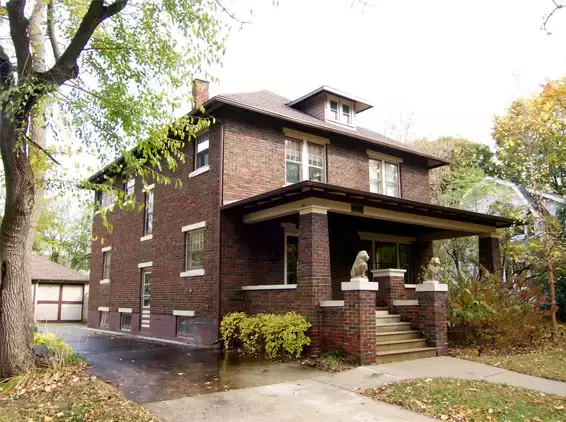
Write the latest real estate news!
Read More
Categories
Recent Posts

